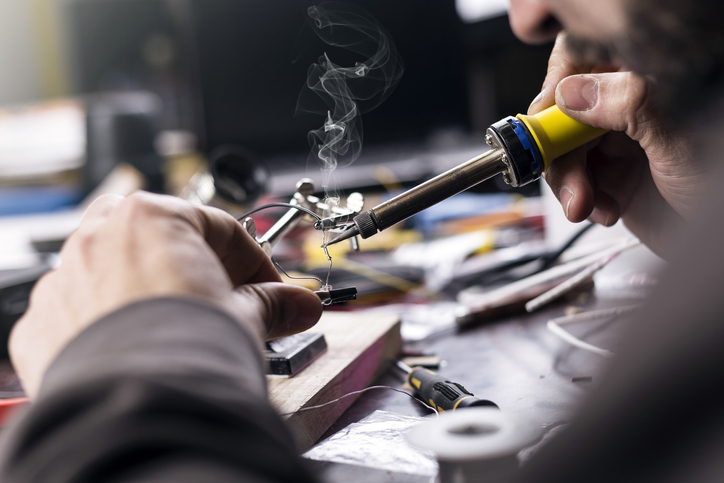
Seasonal Welding Tips for Winter and Summer Projects
Introduction
Welding is an art and a science, requiring skill, precision, and an understanding of various techniques and materials. Whether tackling residential welding projects in your garage or engaging in commercial welding endeavors on the job site, the season can greatly influence the process and results. This article delves into seasonal welding tips for winter and summer projects, providing insights into how temperature, humidity, and environmental conditions affect different welding processes such as MIG, TIG, arc welding, and more.
Welders often face unique challenges depending on the time of year. In winter, cold temperatures can lead to issues like weld cracking and poor fusion. Conversely, summer heat can cause distortion due to thermal expansion. By following our detailed seasonal welding tips, you will ensure optimal performance in every project you undertake.
Seasonal Welding Tips for Winter and Summer Projects
Understanding the Importance of Seasonal Adjustments
When it comes to seasonal welding tips, understanding how environmental factors impact your work is crucial. For instance:
- Temperature: Cold weather can lead to slower cooling rates for welds, while high temperatures can result in faster cooling.
- Humidity: High humidity levels can introduce moisture into your welds, affecting their integrity.
By adjusting your techniques based on these factors, you can prevent common welding defects that might otherwise arise during winter or summer months.
Winter Welding Challenges
Cold Weather Effects on Weld Quality
Winter brings its own set of challenges for welders. Cold temperatures can cause:
- Increased brittleness in metals
- Slower cooling rates
- Potential for hydrogen-induced cracking
To combat these issues:
Preheating Techniques for Improved Bonding
Preheating is essential in winter welding projects. It helps to minimize thermal shock by gradually raising the material's temperature before applying heat through welding.
- Methods: Use propane torches or heat lamps to preheat metal surfaces.
- Temperature Range: Aim for a preheating temperature between 150°F to 300°F depending on the type of material.
Selecting Appropriate Equipment for Cold Conditions
When performing residential or commercial welding in winter:
- Invest in equipment designed for cold-weather performance; this includes specialized gloves and jackets.
- Ensure that your power supply operates effectively at lower temperatures.
Summer Welding Challenges
Heat Distortion Management
Summer comes with its own set of hurdles—primarily heat distortion caused by extreme temperatures during the welding process.
Dealing with Humidity During Welding
In humid conditions, moisture can compromise your weld quality:
- Store your electrodes properly to prevent them from absorbing moisture.
- Use a dehumidifier if working indoors.
Techniques Comparison Guide: MIG vs TIG vs Arc Welding
MIG Welding Techniques for Summer Projects
MIG (Metal Inert Gas) welding is often favored for its speed and ease of use:
TIG Welding Considerations During Winter Months
TIG (Tungsten Inert Gas) welding requires more finesse:
Arc Welding Safety Tips Across Seasons
Regardless of the season you're working in:
Mobile Welding Solutions: A Seasonal Perspective
Whether you're engaged in auto welding repair or custom fabrication:
- Mobile units should be equipped with all-weather protection against rain or snow during winter months.
- In summer, ensure that mobile units have shade provisions to protect both equipment and workers from overheating.
Importance of Welding Inspections Throughout the Seasons
Regular inspections are critical for ensuring quality throughout all seasons:
Welding Certifications Explained by Seasonality Needs
Being certified in various types of welding not only boosts credibility but also equips you with specific skills tailored to seasonal demands:
- Look into certifications that focus on techniques applicable during extreme weather conditions—such as underwater or high-altitude certifications.
Energy Efficient Welding Tips Throughout the Year
Adopting energy-efficient practices benefits both budget constraints and environmental footprint:
Welding Repair and Maintenance Tips Across Seasons
Proper maintenance ensures longevity across all seasons:
Latest Welding Technology Advancements Impacting Seasonal Workflows
Stay updated with technology that empowers seasonal adaptability:
Welding Careers and Job Opportunities Throughout the Year
The demand for skilled welders fluctuates with seasons but remains steady overall:
Welding Project Case Studies Examples by Seasonality Effectiveness
Analyzing case studies reveals insights into successful project implementations considering seasonality effects:
Customer Welding Experience Stories: Lessons Learned Seasonally
Customer feedback plays a vital role in refining practices year-round:
Welding for Art and Design Inspiration Through Seasonal Themes
Artistic welders often draw inspiration from nature's changes throughout seasons:
FAQs
What are some common challenges faced when welding outdoors? Outdoor challenges include variable weather conditions impacting metal behavior and potential contamination from dust or rain affecting weld quality.
How does humidity affect MIG welding? High humidity increases moisture content around joints which may lead to porosity—a defect where gas bubbles form within welds compromising strength.
Is preheating always necessary? While not always required depending on material type/size/pre-existing joint characteristics—it significantly improves bond strength under colder environments!
Can I use different electrodes based solely upon being indoors/outdoors? Yes! Certain electrodes perform better based upon their exposure level—for instance low-hydrogen electrodes are ideal outdoors where moisture could be present!
What PPE should I wear while performing hot work? Essential PPE includes flame-resistant clothing gloves respiratory protection depending upon exposure level—and always ensure proper eye protection too!
Are there specific certifications needed based upon climate zone? While not strictly mandated—it’s beneficial obtaining region-specific certifications addressing unique climatic influences upon various materials utilized within those zones!
welding serviceConclusion
Navigating through seasonal changes while conducting various forms of residential, commercial, auto repair or custom-welding projects presents unique challenges that require careful consideration! Whether it's preparing adequately during harsh winters utilizing pre-heating methods—or employing proper techniques aimed at managing distortions induced by summertime heat—the key takeaway here remains flexibility!
With diligence combined alongside continuous learning regarding evolving technologies coupled with adherence towards safety regulations—you’ll find success across any endeavor undertaken throughout differing climates! Remember—the right mindset coupled alongside preparedness forms foundations leading towards achieving ultimate goals every single time!